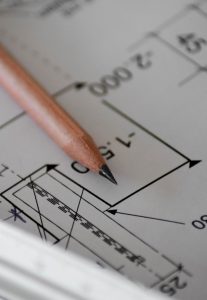How a building performs is largely based on its design, what it is made of, and how it is built. Building physics studies and optimises heat flows throughout a structure, using the building’s location, geometry, massing and orientation as a baseline for analysis.
The team here at the Active Building Centre Research Programme is working to determine an optimum combination of materials and siting to maximise the impact of installed renewable and shared energy systems.
New builds offer an opportunity to control the design and fabric choices from the outset of a project. Early stage analysis allows for different options to be tested and validated prior to construction, delivering capital and operational savings prior to a shovel hitting the ground. With predicted energy loads and heat flows calculated at the design stage, the design team will be in a prime position to integrate advanced systems and controls to increase building performance and profitability.
Concurrent work in the retrofit market is also on-going, with our academic partners undertaking expansive stock modelling processes and developing novel methods by which the building fabric of existing buildings can be swiftly and simply determined.
Once the fabric of an existing building is known, building performance can be more robustly determined, and proposals for successful technological interventions can be sized and modelled ahead of a mass roll-out across the retrofit market. Our team is developing the tools and methodologies for assessing existing buildings swiftly and accurately at scale.






